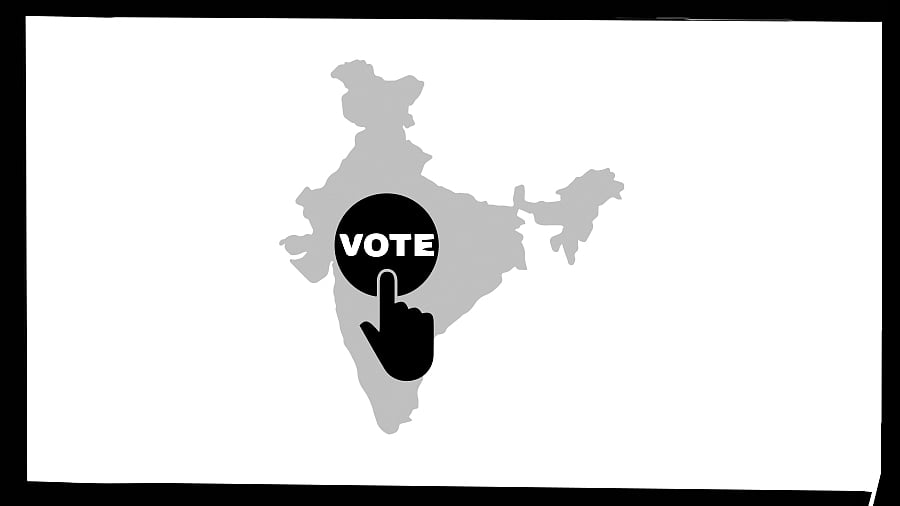
On December 17, the Lok Sabha introduced two significant bills to advance the One Nation One Election (ONOE) initiative. A Constitution Amendment Bill aims at aligning the terms of the Lok Sabha and state legislative assemblies and a consequential bill aims to amend relevant Acts for the Union Territories and the National Capital Territory of Delhi, enabling simultaneous elections across these regions.
Through these measures, the government seeks to overhaul the electoral system by proposing that elections for the Lok Sabha and state assemblies be held concurrently, replacing the current staggered timelines.
The proposed amendments reflect the recommendations of the high-level committee on ONOE, chaired by former president Ram Nath Kovind, which submitted its report to President Droupadi Murmu earlier this year. Among the key provisions is the introduction of Article 82A via the Constitution (129th Amendment) Bill, 2024.
This article mandates simultaneous elections for the Lok Sabha and all state assemblies but specifies that it will take effect only after the 2029 general elections. Additionally, it stipulates that the tenure of state assemblies will end alongside that of the Lok Sabha, meaning assemblies elected post-2029 may not complete a full five-year term.
In instances where simultaneous elections cannot be conducted in a state, the Election Commission of India may recommend to the President those elections for the affected legislative assembly be deferred.
The EC will also determine the date marking the end of a legislative assembly’s tenure. Proposed amendments to Articles 83 and 172 address scenarios where the Lok Sabha or state assemblies are dissolved before completing their term. Under ONOE, midterm elections would elect representatives only for the remainder of the original term, with fresh elections held at the end of the Lok Sabha’s tenure.
The central government has proposed ONOE to address challenges posed by staggered elections that disrupt governance and public life, and impose significant financial costs. Frequent elections require repeated enforcement of the Model Code of Conduct which halts the announcement of policies, welfare schemes, and developmental projects in poll-bound regions, slowing progress and governance. Elections also strain public resources and services. Thousands of officials and security personnel are diverted from essential duties for prolonged periods, creating gaps in regular administrative functions.
ONOE aims to mitigate these issues by synchronising the elections that would streamline governance, ensure uninterrupted developmental work, and significantly reduce the financial burden on the exchequer. By consolidating election-related activities, ONOE promises to enhance administrative efficiency and voter engagement, minimising electoral fatigue.
A monumental challenge
The promises notwithstanding, ONOE will face substantial challenges. The working committee drew inspiration from countries like Indonesia, Germany, Sweden, Belgium, the Philippines, and South Africa; these nations have populations far smaller than India’s – none even reaching one-fourth of its size. Given India’s vast population and diversity, even state elections are conducted in multiple phases to manage the logistical and security challenges. Implementing simultaneous elections nationwide would be a monumental task.
Although ONOE is touted as a cost-effective alternative, it does not entirely resolve the issue of expenses. For instance, if an assembly is dissolved mid-term, polls would elect representatives only for the remainder of the term, necessitating another election at the end of the Lok Sabha’s tenure. This could increase the overall number of elections, making the process more costly and counterproductive to its objectives. By contrast, under the current system, mid-term elections result in a full five-year term for the new government.
The governance-related objectives behind ONOE face scrutiny. The provision allowing the EC to defer elections in specific cases undermines the promise of continuous governance. During such delays, the absence of a ruling government could disrupt administrative functioning. Additionally, a government elected mid-term may struggle to focus on governance due to its shorter tenure and the prospect of impending elections.
A critical issue is ONOE’s potential impact on federalism. It clashes with the concept of federalism, contrary to the idea of India as a “Union of States” specified in Article 1. Simultaneous elections are an attack on the autonomy and independence of state governments. This can not only weaken this federal structure but also increase the conflict of interest between the Centre and states.
Simultaneously holding elections for the Centre and states risks blurring the lines between national and regional issues, potentially influencing voter decisions based on central government policies at the expense of state-specific concerns. A recent study published by IDFC Institute concludes – “on average, there is a 77% chance that the Indian voter will vote for the same party for both the state and Centre when elections are held simultaneously”. This intermixing could weaken India’s federal structure, where state and national governance issues require separate attention.
Research by the Centre for the Study of Developing Societies (CSDS) and the Association of Democratic Reforms (ADR) underscores this concern. Since 1989, there have been 31 instances of simultaneous elections for the Lok Sabha and state assemblies in states such as Andhra Pradesh, Odisha, Karnataka, and Tamil Nadu. In 24 cases, voter preferences aligned for both elections, while in 7 cases, they diverged – examples include Tamil Nadu (1989, 1991, 1996), Arunachal Pradesh (2004, 2014), and Haryana (1996). Conversely, elections held separately often yielded differing outcomes, reflecting the distinct priorities voters assign to state versus national governance.
If implemented as envisioned, ONOE could yield substantial benefits, including the reduction of electoral disruptions, alleviation of voter fatigue, and significant cost savings. Synchronising elections would allow administrative and law enforcement agencies to focus on core responsibilities without interruptions. Additionally, consolidating the electoral calendar could simplify the voting process, fostering higher voter participation and engagement.
However, achieving these outcomes requires addressing the logistical, financial, and governance-related challenges posed by the initiative. While ONOE has the potential to streamline India’s electoral process and reduce its financial burden, its impact on federalism and the complexity of its implementation necessitates careful consideration.
(The writers are fifth year law students at National Law University, Jodhpur)